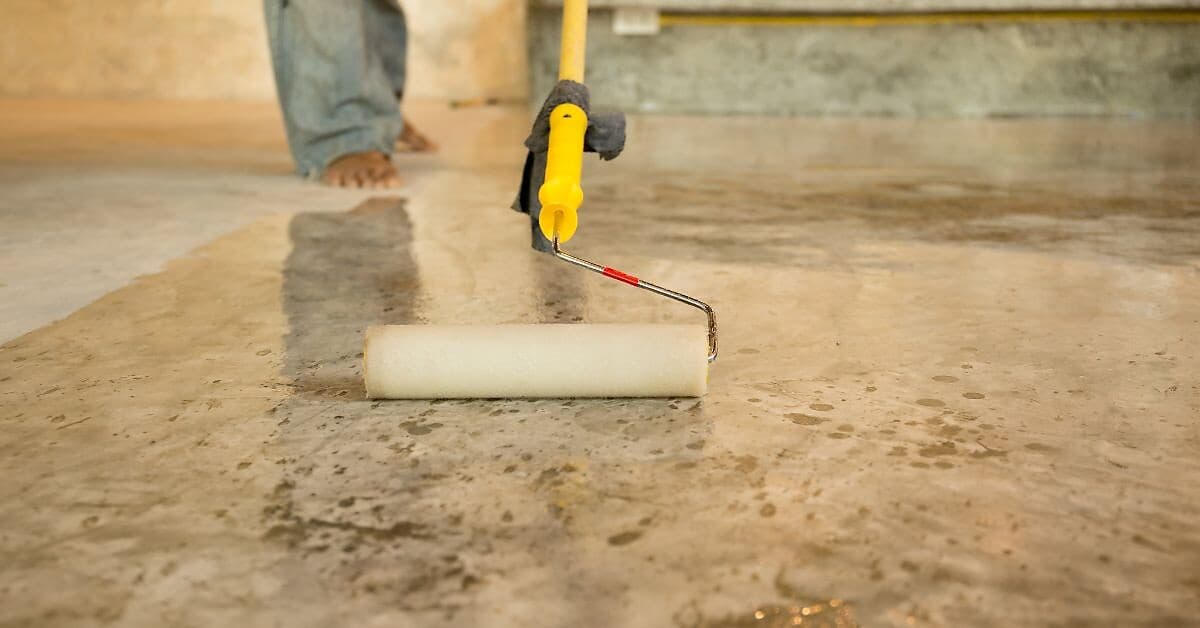Tips for Choosing the Right Concrete Stain Color

Tips for Choosing the Right Concrete Stain Color
The right concrete stain color can significantly influence the aesthetics and functionality of your spaces, both indoors and outdoors. Stained concrete offers multiple design options, ranging from subtle earth tones to vibrant hues, allowing you to customize the look of patios, driveways, floors, and more.
This also plays a crucial role in setting the mood and ambiance of a space. Whether you're aiming for a modern, minimalist look or a warm, rustic feel, the right stain can make all the difference. In commercial spaces, the color can impact how customers perceive your brand, while in residential areas, it can make rooms feel more inviting or spacious.
Acid stains react with the concrete to create unique, variegated color effects. While water-based stains offer a broader spectrum of vivid and consistent shades they are more monotone with a history of peeling and failing. These tips for choosing the right concrete stain color will help you transform ordinary concrete into a striking, durable feature that adds value and personality to any space.
Evaluate Lighting Conditions
When evaluating natural light, consider how the direction and intensity of sunlight changes with the time of day and seasons. Morning light may impart cooler tones, while afternoon sunlight can add warmth to colors. For outdoor spaces, be mindful of how sun patterns and shadows cast by trees, buildings, or other structures interact with the stained concrete, potentially altering its visual impact.
For indoor spaces, artificial lighting can dramatically change how stain colors appear. Incandescent lights tend to emit a warm, yellowish glow, which can soften intense or dark colors. Fluorescent lighting often casts a cooler, bluish light, potentially making colors appear harsher. LED lighting, available in various color temperatures, is popular because it offers more flexibility and precision in achieving the desired effect.
Consider the Surrounding Environment
The surrounding environment should influence your color choice. Consider existing elements such as landscaping, architectural features, and nearby structures. Choose a concrete stain color that harmonizes with these elements to create a seamless and integrated look. Your goal should be to compliment your surroundings rather than overpower them.
A stain color that echoes the natural tones found in your garden can create a harmonious transition from your concrete surfaces to the landscaping. Architectural features, such as the style, color, and materials of your home or surrounding buildings, are also crucial in the decision-making process.
Understand Your Space
Before selecting a color, evaluate the specific space where you will apply the stain. Consider the size, shape, and purpose of the area. For larger spaces, such as patios or driveways, earthy or neutral tones can create a cohesive and expansive feel.
For smaller or enclosed areas, lighter colors can make the space appear larger and more open. By fully understanding the features of your space, you can select quality concrete stain colors that elevate the entire aesthetic of your project.
Reflect on Personal Style and Preferences
Begin by identifying the overall theme or style you wish to achieve in your space. Don't be afraid to experiment with bold and unconventional colors. Mixing vibrant shades can create a lively and dynamic environment, reflecting a more adventurous and playful personality.
Consider how the chosen stain will pair with existing items and whether it will complement or contrast with them effectively. Your artwork or your favorite color palettes can inspire your concrete stain selection, allowing your style to shine through in your space.
Explore Color Samples and Mock-Ups
Exploring color samples and mock-ups is an effective way to narrow down your options. This approach enables you to visualize how different shades interact with the specific texture and finish of your concrete, ensuring a more accurate color representation.
Acid stain works by reacting with the concrete itself and it might change color depending on the concrete type. Test with small color spots over the desired surface and document your observations meticulously, taking note of the pros and cons under different conditions.
Factor in Maintenance and Longevity
Different stain colors may require varying levels of maintenance, especially in high-traffic areas or exterior applications. Darker stains can hide dirt and stains more effectively but may also show wear and tear more prominently. Lighter colors might need more frequent cleaning to maintain their appearance.
Consider the long-term maintenance requirements and choose a color that aligns with your upkeep preferences. Protective coatings such as sealers, waxes, or epoxy can significantly improve the durability and maintenance needs of the concrete surface. They can enhance the stain's lifespan, making it more resistant to damage and easier to clean.
Think About Temperature Effects
Before choosing a concrete stain color, consider how different colors influence the thermal properties of concrete. Darker colors absorb more sunlight and retain heat. This can be beneficial in cooler climates where retaining heat can help keep surfaces from becoming icy or too cold during winter months.
Lighter or pastel colors have a reflective quality that helps to divert heat. These colors are excellent choices for areas exposed to intense sunlight, as they keep the surface temperature down, making them more comfortable to walk on during hot weather.
Balance Boldness with Versatility
While bold and vibrant colors can make a striking statement, they may also limit future design flexibility. If you're unsure about committing to a strong color, consider balancing bold choices with more versatile and timeless options.
Integrating bold colors through furniture, accessories, and decor can offer a non-permanent way to experiment with vibrant hues. This approach allows you to swap out bold items as your tastes evolve or as trends shift, without the need for extensive renovation or re-staining.
Prioritize Quality and Brand Reputation
Conduct thorough research into the concrete stain brands available on the market before committing to a choice. Established brands often have a proven track record and typically offer a range of stain options tailored to different needs and environments.
Consider the product's formulation. Quality stains with the highest-grade raw materials and the strictest of quality controls are your best option. With the right concrete cleaning and prepping, a reliable concrete acid stain will not fade, chip, or peel.
Concrete stain colors come in a diverse spectrum, offering boundless opportunities for customization. By following these tips, you can confidently select a stain color that enhances the beauty and functionality of your spaces. Always consider factors such as space, lighting, environment, style, and maintenance needs in your decision-making process. With careful planning and informed choices, your stained concrete surfaces will become a stunning and enduring feature of your home or outdoor area.
